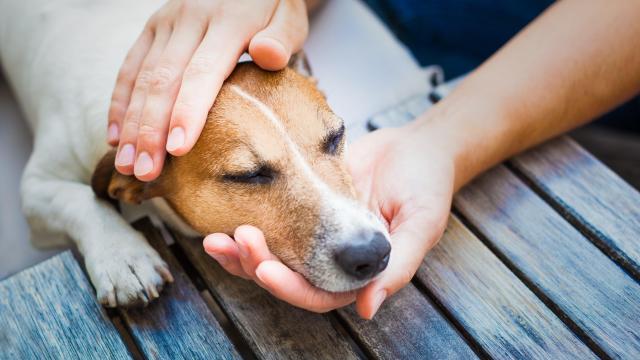Humans don’t deserve dogs. They’re beautiful, they’re loyal, and they’re fun to have around. Life with a dog is great — which makes it all the more terrifying when something goes wrong. We hope your dog is healthy and happy for the duration of their life, but in the event of a medical emergency, you should be prepared. Here’s how to give your dog CPR.
How to know your dog needs CPR
According to PetMD’s Dr. Jennifer Coates, DVM, a dog might need CPR for a number of reasons, including trauma, choking, or illness — but you shouldn’t perform CPR unless you have to, as it can be potentially hazardous and even dangerous for a healthy dog. The goal of CPR for dogs is the same as with humans: If a dog’s heart stops beating or they stop breathing, oxygen levels can drop and vital organs can fail; CPR can provide artificial respiration and blood flow until the heart can be restarted and begin beating on its own.
Per the Red Cross, your first step should be to check if your pet is breathing and if they have a heartbeat. If their chest is not moving and you can’t find a pulse, start CPR.
How to perform CPR on a dog
There are different hand placements involved for different sizes and types of dogs:
Check out your dog’s physique now and make a mental note of where your hands would ever need to go in case of emergency. Finally, as noted by ASPCA Pet Insurance, you should ensure there is nothing obstructing your pet’s throat that could interfere with the rescue breathing before beginning CPR.
- Small dogs: If your dog is small, make a fist and place the heel of your hand over their heart. Put your other hand on top of your fist.
- Deep-chested dogs: If the dog is deep-chested, place the heel of one hand over the widest part of their chest and the other hand on top of that one.
- Barrel-chested dogs: If your dog is barrel-chested, place the dog on their back, put one hand on the widest part of their sternum, and cover it with you other hand. Lock your elbows and make sure your shoulders are positioned directly above your hands.
Here are the next steps, as outlined by the Red Cross:
- Push hard and fast, at a rate of 100-120 compressions per minute.
- Be sure the compressions are one-third to one-half the width of the animal’s chest.
- Make sure the chest comes back fully before compressing again.
- Give rescue breaths by closing the pet’s mouth and extending their neck, covering their nose with your mouth, gently holding their mouth closed with your hand, and exhaling until you see the dog’s chest rise (for dogs under 14 kg, cover the entire nose and the mouth with your own mouth).
- Continue to give CPR, cycling between 30 chest compressions and two rescue breaths, until they start breathing on their own.
- Check for breathing and a heartbeat every two minutes after beginning CPR.
- Continue the procedure until help arrives or you are able to transport the dog to an animal hospital.
How to do the Heimlich manoeuvre on a dog
In the event you check your dog’s throat for blockages and discover an obstruction, you may be able to remove the object on your own — but don’t do so if you believe you’ll end up lodging it farther down the airway. Instead, opt for a modified Heimlich manoeuvre to clear the passage.
- Place your hands on the sides of the dog’s rib cage
- Apply pressure.
If your dog does not start breathing when the blockage is removed, begin CPR and make your way to a veterinary hospital.

Leave a Reply
You must be logged in to post a comment.